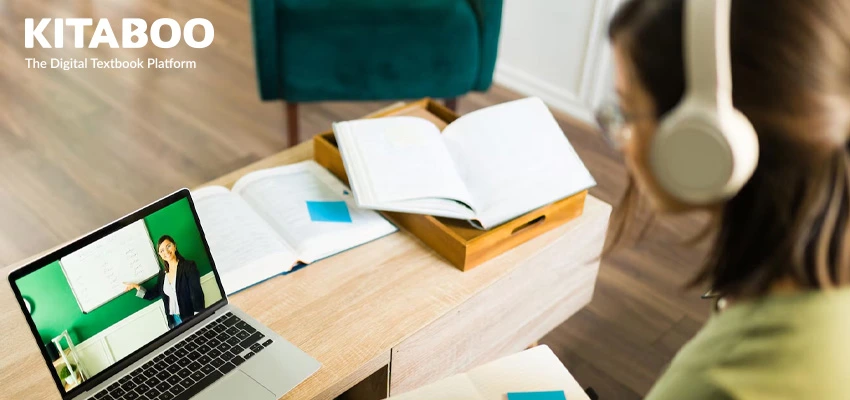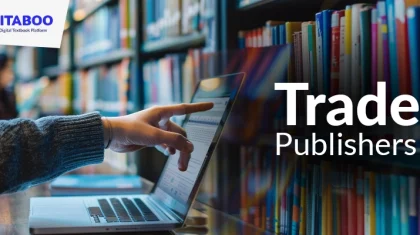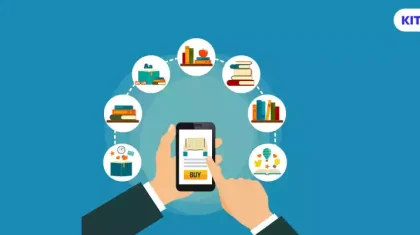
How K12 Publishers Can Optimize Digital Content for Low-Bandwidth and Offline Learning Environments
Summarize this blog with your favorite AI:
Education remains the pillar for a more progressive society in this globalized world. However, K12 students often rely on very low-bandwidth or offline learning environments, which means they may lack access to integral learning materials.
For publishers, this gap is a problem that can be converted into an opportunity. Optimizing K12 digital learning materials would bring inclusivity and bridge the digital divide.
Current research shows that as of October 2024, 67.5% of the global population uses the internet. Another UNICEF report showed that two-thirds of the world’s school-age children had no internet access. However, the good news is that in the second quarter of 2024, 96.2% of global users had access to the internet via mobile phones.
Publishers should take advantage of this opportunity. By collaborating with digital textbook platforms like KITABOO, K12 publishers can produce engaging, interactive, and accessible online and offline educational resources that promote a more inclusive education today.
Let us learn more about optimizing K12 digital learning materials for low-bandwidth and offline learning environments in this guide!
Table of Contents:
II. Challenges of Offline Learning Environments
III. Optimizing K12 Digital Learning Materials for Low-Bandwidth and Offline Learning Environments
- Optimize File Sizes Without Compromising Quality
- Add Offline Features
- Design Mobile-Friendly Interfaces
- Provide Multi-Format Resources
- Use Adaptive Learning Technology
- Focus on Localized Content
- Leverage Cloud and Local Storage Hybrid Models
- Develop Partnerships for Expanding the Reach
IV. Conclusion
Top K12 Education Trends
Let us understand some facts first:
- Today, 63% of K12 students use online learning tools at least once daily.
- Approximately 10 million K12 students learned online or via virtual classes during the 2024-2025 school year.
- 91% of school-aged children are accustomed to video games, and 52% of early learners have participated in educational gaming.
- Laptops are used by 56% of U.S. students in the classroom at least one day a week.
Today, key K12 learning trends include:
- Learning materials with a productive mix of real, AR, AI, and VR
- Personalized learning results that lead to improved results
- Continuous learning via subscriptions and memberships
- Game-based learning that has become the rule rather than the exception
- Nano-learning or microlearning used in schooling
Considering these trends and facts, publishers must consider K12 digital content optimization, especially for students managing low-bandwidth or offline learning environments.
Challenges of Offline Learning Environments
Some of the key challenges for the consumption of digital content are:
- Limited Internet Access – Not every student has access to the internet.
- High Data Costs – Students in low-income families cannot maintain a continuous connection.
- Device Compatibility – The learning material may need particular hardware or software utility, sometimes unavailable to the students.
- Interactive Features and Media Limitations – Students with lower bandwidth cannot access the multimedia content, which reduces learning time.
- Lack of Offline Solutions – Several digital platforms have an online-based approach, neglecting offline capabilities.
- Long-Term Maintenance of Updates – Publishers can find it difficult to synchronize digital content and keep it up-to-date for offline usage.
Optimizing K12 Digital Learning Materials for Low-Bandwidth and Offline Learning Environments
K12 publishers are now empowered to create learning resources for students in low-bandwidth and offline environments. Here are some practical K12 publisher’s digital strategies that can optimize their digital resources:
1. Optimize File Sizes Without Compromising Quality
Large file sizes are a drawback when internet access is not sufficient. File compression with no compromise on quality helps in the easier flow of access. Here are some tips:
- Video content can use adaptive bitrate streaming, changing the quality according to available bandwidth, thereby decreasing buffering time.
- Advanced algorithms can compress images so much that they can save files in such low sizes without loss of quality.
- The modular file structure can facilitate easy download and storage.
2. Add Offline Features
Offline accessibility is essential to students who do not have steady access to the internet. Key digital textbook platforms can help the user access offline educational resources effectively by simply holding onto the lessons. Here are some solutions:
- Content caching makes sure students can access any learning material they previously accessed offline.
- Downloadable eBooks and interactive PDFs can be accessed offline.
- The full offline capability of some apps offers offline quizzes and assessments that keep learners engaged.
3. Design Mobile-Friendly Interfaces
Mobile phones are the main source of access to educational materials in most of the underprivileged regions. Publishers must design mobile-friendly interfaces to ensure that students can access and consume the content on small screens. Best practices include:
- Using platforms with responsive design principles to adapt the layout, images, and text to different screen sizes.
- Simplifying navigation and user interface to operate on touch.
- Optimizing K12 digital learning materials for low-power devices that avoid wasting the battery as students may not get access to any charging facility due to geographical barriers.
4. Provide Multi-Format Resources
Students learn differently, so K12 digital content optimization in different formats ensures inclusivity and accommodation. Here are some techniques:
- Incorporate audio, video, text, and interactive components into lessons to accommodate the multiple needs of the students.
- Design printable worksheets and activities that substitute for students who do not access computers regularly.
- Create lightweight HTML versions of digital textbooks so cellular and basic devices can access such content.
5. Use Adaptive Learning Technology
Adaptive learning technology is valuable for offline and low-bandwidth environments because it customizes the educational experience according to individual student needs. Here are some best practices:
- AI-driven algorithms can analyze student behavior and preload necessary lessons so that critical resources are available when students are disconnected.
- Dynamic assessment helps adjust the questions in real time based on student performance, which creates more learning opportunities.
- Online-offline seamless progress synchronization.
6. Focus on Localized Content
Localized content is essential for keeping K12 learners engaged properly and ensuring the relevance of what is being discussed. Translations of educational content into local languages may remove serious barriers to understanding content. Here are some things that you can do:
- The presentation of culturally appropriate examples, scenarios, and case studies makes more content relevant and effective.
- Cooperative efforts with local experts ensure accuracy and proper relevance.
- Customize content according to regional education standards.
7. Leverage Cloud and Local Storage Hybrid Models
By combining cloud and local storage, students can gain access to hybrid learning solutions for K12, even when connectivity is intermittent. The most crucial lessons and resources can be copied and stored locally, ensuring no disruption in learning. Here are some other tips:
- Periodic syncing with the cloud allows a student to update the progress and exploit more materials at the next instance of availability.
- Lightweight cloud services bring in minimal data usage and ensure resource updates.
- They also offer secure backup options for data.
8. Develop Partnerships for Expanding the Reach
Digital education resources can reach more and influence more if shared in collaboration. Here are some solutions that publishers can use:
- Collaborate with educational apps and make content available to students in online and offline learning environments, regardless of their internet access.
- Distribution of preloaded devices and integration into national curriculums.
- Maintaining long-term partnerships for scalability.
Conclusion
K12 digital content optimization for low-bandwidth and offline environments is a mission that aims to offer equitable learning opportunities for all. Such K12 publishers’ digital strategies help fill connectivity gaps and offer hybrid learning solutions for K12 that work in offline learning environments.
Such innovation will revolutionize access to education. Start your journey with KITABOO and use advanced technology and tools to design, distribute, and manage digital content for various learning environments.
Empower your publishing strategy with KITABOO and make education accessible to every learner everywhere.
Also check:
- Digital Textbook Platform for K12 Publishers
- Digital Textbook Platform for Associations & Societies
- Digital Textbook Platform for Trade Publishers
- Digital Textbook Platform for Training Companies
- Digital Publishing Solution for Content Aggregators
- Digital Publishing Platform for Professional Training
Discover how a mobile-first training platform can help your organization.
KITABOO is a cloud-based platform to create, deliver & track mobile-first interactive training content.


